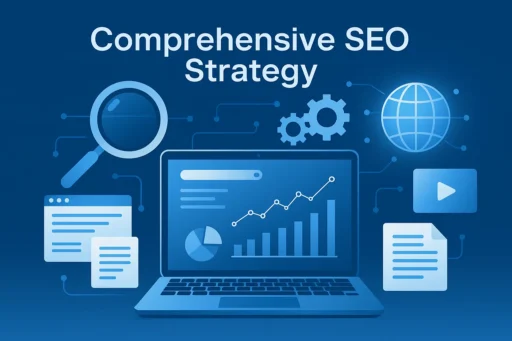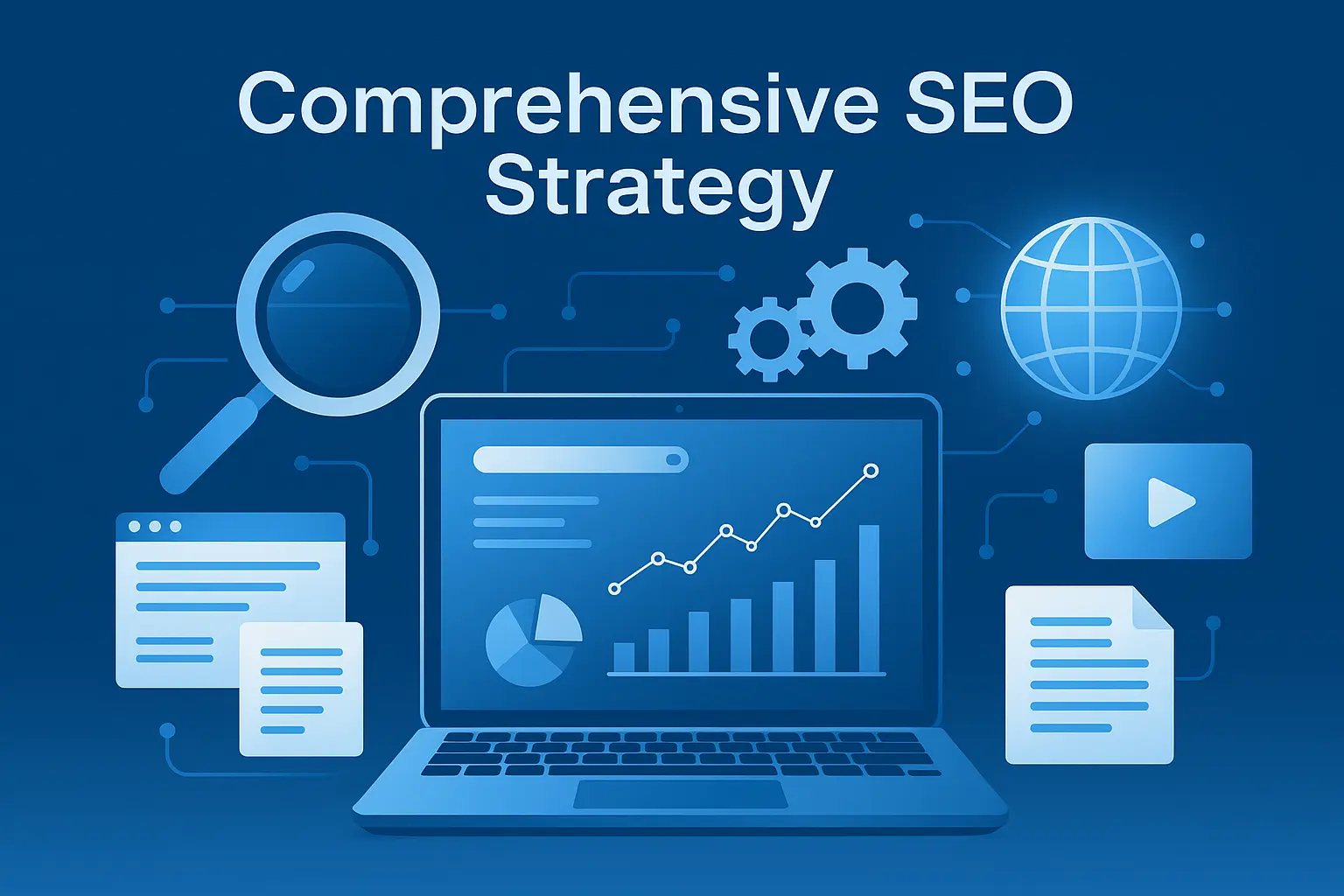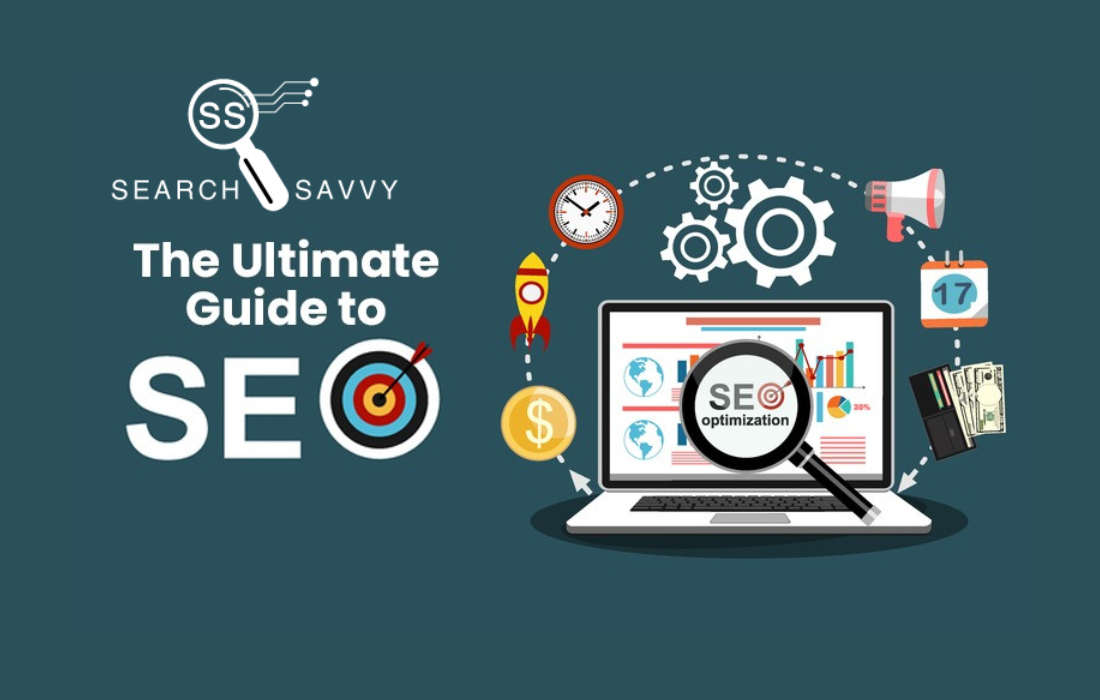Search Engine Optimization (SEO) has evolved far beyond keyword stuffing and link building. Today, success comes from executing a Comprehensive SEO Strategy—a multi-layered approach that blends technical optimization, content excellence, user experience, and AI-driven insights. But how exactly does such a strategy work, and why is it essential for modern digital growth?
In this blog, we’ll break down the core components of a Comprehensive SEO Strategy, explore how they interact, and share actionable insights to help businesses dominate search rankings across traditional SERPs and AI-powered platforms like Google AI Overview, Bing Copilot, ChatGPT, and Perplexity.
What Is a Comprehensive SEO Strategy?
A Comprehensive SEO Strategy is a holistic plan that aligns technical SEO, content optimization, on-page and off-page SEO, local targeting, and AI-readiness to maximize visibility across search ecosystems. Unlike piecemeal tactics, it ensures that every element—from site speed to schema markup to thought leadership content—works in synergy to deliver measurable results.
It’s not just about ranking on Google anymore—it’s about being the trusted answer source across emerging AI-driven search experiences.
The Core Pillars of a Comprehensive SEO Strategy
1. Technical SEO Foundation
Your website’s structure is the backbone of SEO. Without it, even the best content won’t rank.
- Site Speed & Core Web Vitals: Google reports that pages loading within 1–3 seconds reduce bounce rates by up to 32%.
- Mobile Optimization: Over 63% of Google searches come from mobile devices.
- Crawlability & Indexing: Proper use of robots.txt, sitemaps, and canonical tags ensures search engines efficiently index your content.
- Schema Markup: Structured data boosts AI-powered snippets and visibility across platforms.
2. Keyword & Intent Mapping
SEO today is less about keywords and more about intent.
- High-Intent Keywords: Focus on terms that signal buying or action, e.g., “best CRM software for startups.”
- Search Journey Alignment: Map content to awareness (blogs), consideration (guides, case studies), and decision stages (landing pages).
- AI Optimization: Tools like Google AI Overview and Bing Copilot increasingly favor question-based queries (“How does…” “What is…”).
3. Content That Ranks and Engages
High-quality, user-first content is at the heart of every Comprehensive SEO Strategy.
- E-E-A-T (Experience, Expertise, Authoritativeness, Trustworthiness): Google’s quality rater guidelines emphasize expertise-driven content.
- Content Diversity: Blogs, video transcripts, case studies, infographics, and thought-leadership articles expand reach.
- AI Readability: Content should be structured in clear H2s, H3s, and bullet points to be easily parsed by AI-driven engines.
4. On-Page Optimization
Even great content needs optimization:
- Meta Titles & Descriptions with high CTR appeal.
- Internal Linking to distribute authority across pages.
- Multimedia Optimization with alt text and descriptive file names.
5. Off-Page & Authority Building
Google still values authority signals:
- High-Quality Backlinks: From niche-relevant and high-authority domains.
- Brand Mentions & Digital PR: Even unlinked mentions can influence trust in AI-driven engines.
- Social Proof: Positive reviews and engagement improve visibility in both local and AI-powered search.
6. Local & GEO SEO Integration
For businesses with physical presence or region-specific targeting:
- Google Business Profile Optimization: Critical for appearing in local packs.
- Localized Content: City-specific landing pages and blog posts.
- NAP Consistency (Name, Address, Phone) across directories.
7. AI-First SEO Adaptation
A modern Comprehensive SEO Strategy must account for the shift toward AI-powered search engines.
- Conversational Content: Structured FAQs, definitions, and “how-to” guides fuel AI answers.
- Entity-Based SEO: Optimizing around topics and concepts, not just keywords, to align with AI’s semantic understanding.
- Trust Signals: Cited references, case studies, and data-backed insights strengthen authority in AI-curated results.
How These Pillars Work Together
Think of a Comprehensive SEO Strategy as an ecosystem:
- Technical SEO ensures your website is discoverable.
- Keyword research and intent mapping align with user needs.
- Content optimization fuels ranking and engagement.
- On-page and off-page efforts build authority and visibility.
- Local and AI optimization future-proof your brand against evolving search trends.
When executed in synergy, these elements create a sustainable growth engine that drives traffic, conversions, and brand authority.
Read Also: How to Track Zero-Click Searches in GA4 & Adjust Your SEO Strategy
Actionable Steps to Build a Comprehensive SEO Strategy
- Audit Your Website: Identify technical issues using tools like SEMrush or Ahrefs.
- Define Audience Personas: Understand intent, pain points, and search behavior.
- Build a Content Calendar: Map blog posts, landing pages, and thought leadership pieces to the buyer journey.
- Implement Schema & Structured Data: Boost AI visibility.
- Track Performance Metrics: Beyond rankings, measure engagement, conversions, and brand mentions.
- Iterate & Optimize: SEO is never one-and-done. Use data insights to refine continuously.
Final Thoughts
A Comprehensive SEO Strategy is not about chasing algorithms—it’s about building authority, trust, and visibility across every digital channel. By combining technical excellence, intent-driven content, and AI-ready optimization, businesses can ensure they’re not just ranking today but staying ahead in the future of search.
👉 If you want to stay visible across Google AI Overview, Bing Copilot, ChatGPT, and Perplexity, now is the time to invest in a truly comprehensive SEO approach.





